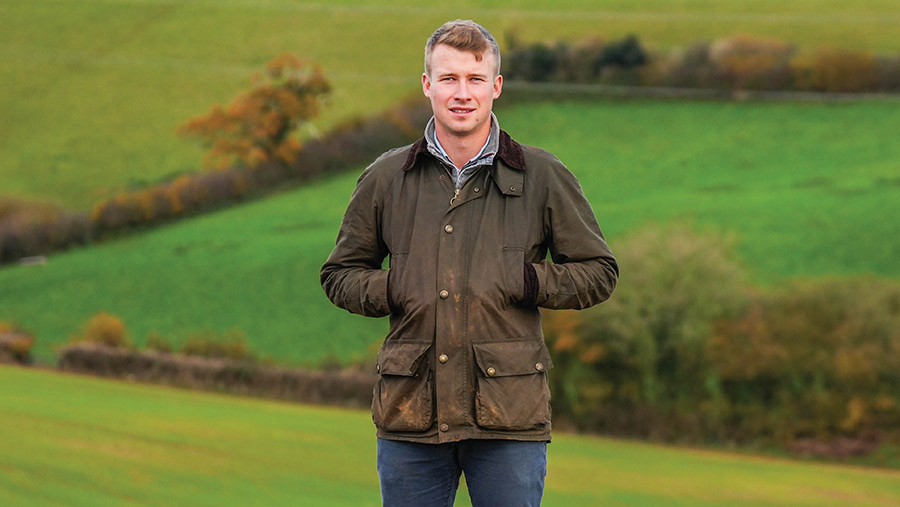Farmer Focus: The urge to tap into ‘free’ nitrogen
 Richard Harris © Emily Fleur
Richard Harris © Emily Fleur Now conditions in the South West are drying up and are quite mild, we have the itch to spread fertiliser on the winter barley.
Although it feels a little early in the calendar year for us, the crops are growing and showing signs of hunger.
I think this winter’s rainfall washed most of the plant-available nutrients away, so an early top-up from the bag does make sense.
See also: How foliar nutrition can help kickstart crops and cut costs
We’ve got a new type of fertiliser on the farm this year, having used a bag in a tramline trial last year. It’s a nitrogen sulphur compound with a “Duo Pro Technology” element to it.
It has been sold to us with the expectation of an improved overall nitrogen use efficiency.
There is a biodegradable polymer coating on the granules, which reduces leaching by holding the nitric and ammoniacal nitrogen in a stable form, in the soil profile.
This increases uptake and therefore utilisation – somewhat like a slow-release fertiliser which matches the plants uptake more closely.
This product also comes with calcium and traces of boron and manganese, so I’m quite sold with the concept, and the trial results around the country from 2023 look promising.
Time will tell if this plays out for us.
Another slightly more edgy fertiliser product we trialled last year – and will use more of – was a bacteria-based biostimulant.
This supposedly converts atmospheric nitrogen into ammonium using a bacteria which is sprayed onto plant leaves in the spring.
This makes a lot of sense when looking into it, as our atmosphere is 78% nitrogen, which is free to tap into.
The bacteria, comparable to that found in legumes, enter the plant though the stomata and colonise around the leaf cells.
Trial results look variable, and I think this could be because our understanding of plant health will have to improve to get these types of products to work.
Unhealthy plants will not uptake and convert the elements we are applying if they are fully functioning.
Lets hope we can tap into this “free” nitrogen.


